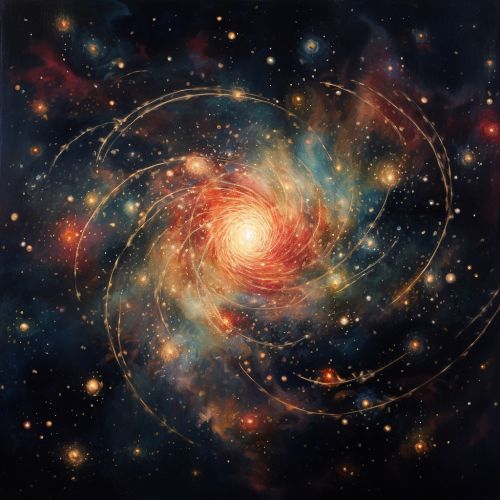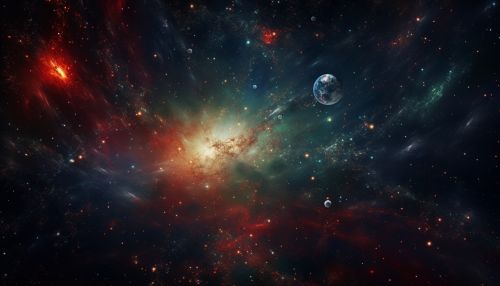Cosmological Inflation
Overview
Cosmological inflation, a theory in physical cosmology, suggests that following the Big Bang, the universe expanded exponentially before settling into the slower expansion that we observe today. This theory, proposed by physicist Alan H. Guth in the late 20th century, aims to explain several puzzling aspects of the universe's current state.


Theoretical Background
The theory of cosmological inflation is rooted in the principles of quantum mechanics and general relativity. It was developed to address certain problems in the standard Big Bang theory, such as the horizon problem and the flatness problem. These issues, which concern the uniformity and geometry of the universe, are resolved if the universe underwent a period of rapid expansion in its early stages.
Quantum Mechanics and General Relativity
Quantum mechanics and general relativity are two fundamental theories in physics that describe the universe at the smallest and largest scales, respectively. Quantum mechanics deals with particles at the atomic and subatomic level, while general relativity describes the behavior of massive objects and the structure of space-time. The theory of inflation combines elements of both these theories to explain the early universe's behavior.
Inflationary Epoch
The inflationary epoch is believed to have occurred from 10^-36 seconds after the Big Bang to sometime between 10^-33 and 10^-32 seconds. During this brief period, the universe expanded at an exponential rate, increasing in size by a factor of at least 10^78 in volume.
Mechanism of Inflation
The exact mechanism that drove inflation is not yet known, but it is generally believed to involve a scalar field known as the inflaton. This field, which permeates space, is thought to have been in a high-energy state during the inflationary epoch. As the inflaton field decayed to a lower energy state, it released energy that caused the universe to expand.
Evidence for Inflation
Several lines of observational evidence support the theory of cosmological inflation. These include the large-scale uniformity of the cosmic microwave background, the distribution of galaxies in the universe, and the patterns of cosmic microwave background anisotropies.
Cosmic Microwave Background
The cosmic microwave background (CMB) is the afterglow of the Big Bang, a faint radiation that permeates the universe. The uniformity of the CMB across the sky, known as the horizon problem, is one of the key pieces of evidence for inflation. Inflation explains how different regions of the universe could have come into causal contact and reached thermal equilibrium before the CMB was emitted.
Large-Scale Structure
The large-scale structure of the universe, with galaxies clustered along filaments separated by vast voids, also supports the theory of inflation. Inflation predicts that quantum fluctuations in the early universe would be stretched to cosmic scales, providing the seeds for the formation of large-scale structure.
Challenges and Controversies
Despite its successes, the theory of inflation is not without its challenges and controversies. Some physicists question whether inflation can be tested empirically, while others argue that the theory requires fine-tuning of initial conditions.
Multiverse Predictions
One of the most controversial predictions of inflation is the existence of a multiverse. According to this idea, our universe is just one of many in a vast multiverse, each with its own laws of physics. This prediction arises from the concept of eternal inflation, where inflation never completely ends but continues in different regions of space.
Future Directions
Research in cosmological inflation continues to be a vibrant field, with many open questions remaining. Future observations, such as those from the Planck satellite and other cosmic microwave background experiments, may provide further insights into the nature of inflation and the early universe.
